KNOWLEDGE – Molecular gastronomy
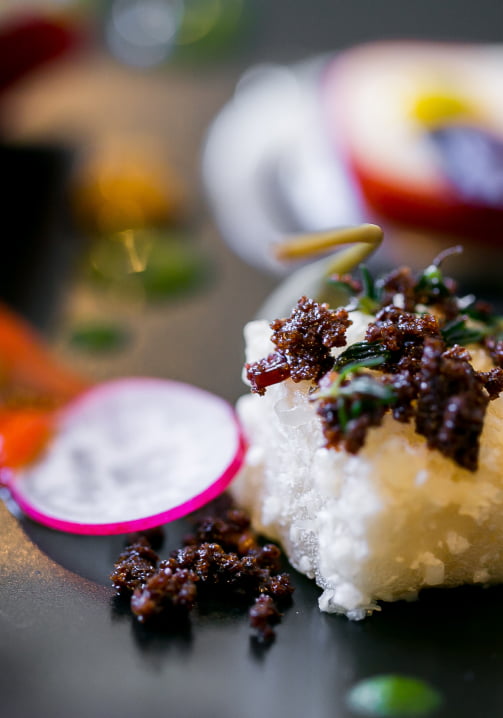
Everything You Should Know About Crispit
Chefs all around the world strive for perfection. They work day and night to get the perfect taste for their start dish. They go through years of training just to present their plate in a way that’s appetizing and appealing to the diner. But this road to beautiful looking and tasting food isn’t always easy.
One of the most challenging phases for a new chef is to perfect their battle. Whether its fish and chips or the plain old fried chicken, everyone is looking for that secret ingredient that will help them turn their soggy batter into one that’s crispy and perfect in taste.
If you’re in the same boat, count your luck because you’ve found the best solution in the form of Crispit.
What Is Crispit?
Crispit is the product of a natural fiber that is designed to produce extra crunch for your fried foods. It is guaranteed to take your dish up a notch because it soaks up all the liquid and results in a crispier than expected coating. Moreover, because the special ingredient has no taste or color, you don’t have to worry about the quality or look of the end product.
Read MoreBecause Crispit is made from a natural fiber, there’s no need for you to think of it as some kind of an additive or something similar. Crispit can also be sprinkled on sauces and cheese and will soak up the excess water to get the desired consistency.
This special ingredient can be used in pies with 3 liquid layers or something with equal consistency to get that ideal cover we’re all looking for when baking pies or frying foods.
Using Crispit
Crispit is ideal for young and progressive chefs because it gives your dish the extra crunch without changing the flavor profile. All you need to do is to replace approximately 40% of your flour content with Crispit, fry at medium-high flame, and viola, you’ll be presenting your diner with the crunchiest food they have ever tasted.
Crispit can be used to coat virtually any ingredients from proteins to vegetables. It can be added to batters without changing the flavor and this means that the people tasting the dish will be surprised at what they’re eating.
Crispit isn’t available in a lot of variety, this is why it is essential that you buy from a manufacturer who you can trust for quality.
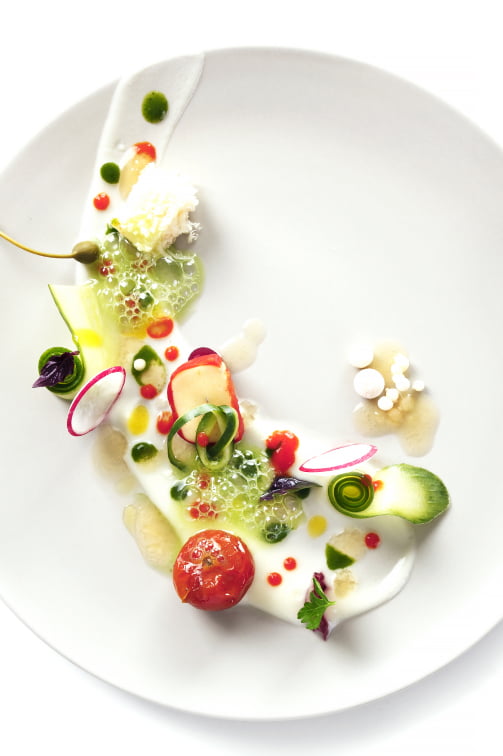
Everything You Should Know About Crytex
When you first start out with cooking, you make mistakes that often turn the dish into something that’s inedible. There’s rarely anyone who can claim that their very first plate of food was perfect. Unless of course they are born into a family of good cooks. Even then, you would need the advice and suggestions of elders who spent years perfecting their dishes.
While there’s a range of blunders you can make in the kitchen, one of the most common things you’ll see happening is the kitchen are errors with thickeners. While home chefs know only of flour, corn flour, or starch as thickening agents, seasoned chefs know that there are a lot more you can use.
One such special ingredient that has been derived from corn starch is Crytex.
What is Crytex?
Crytex, in the simplest of terms, is a modified corn starch that can be defined as gum or thickener. This special ingredient has been specially designed to provide a firm texture and structure to products, without the need for hydration and cooking.
The beauty of Crytex is that it cannot just be added to thicken sauces and give structure to other products, but can even be added to batters to a crunchier product on the plate. The ingredient acts as a protective barrier against oil in batters and results in an oil-free, extra-crisp covering that will be appreciated by one and all.
Read MoreTo make fruit or vegetable tuiles that have a flexible, glass-like texture, use the Crytex with Isomalt, and you’ll end up with a beautiful looking element for your plating.
Using Crytex In Cooking
Depending on the recipe and the formula you are using, it is recommended that you use no more than 1% of Crytex in any particular dish. While you might need to adjust the quantity according to the consistency you’re looking for, 1% is the recommended dosage.
Unlike other corn starches or gums and thickeners, Crytex has no taste or color. This means that the special ingredient won’t change the flavor profile or look of the dish and both you and the taster will be happy with the result.
Crytex can be used in batter coatings, fruit or vegetable chips, and glass-like tuiles and is guaranteed to enhance the appearance of your dish by at least 10x.
While a variety of thickeners are available on the market, one as versatile as Crytex is a rare find.
So, make sure you add this to your list of pantry items.
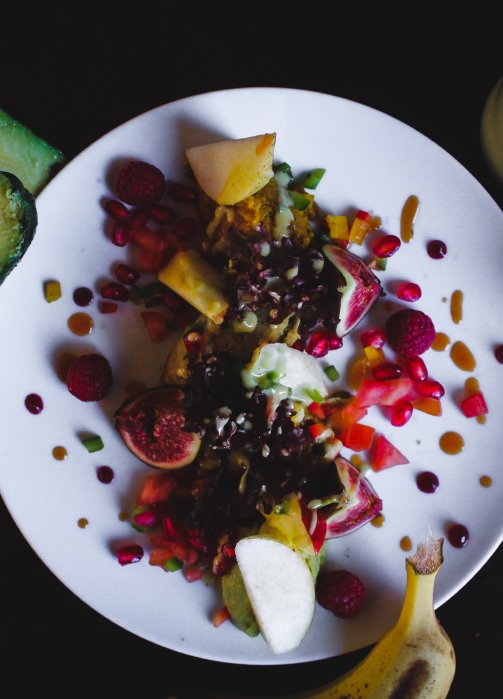
Titanium Dioxide
Titanium dioxide or TiO2 is a naturally occurring mineral that is mined for the earth. The element is present in different crystalline forms such as anatase and rutile. It is processed and refined into a powder so it can be added to food.
Titanium dioxide is white in colour and is used to enhance the sheen and colour of certain foods. It is most notably used to brighten the colour of foods like dairy products, sweets and glazes. It is also used in foods that are sensitive to UV light. You can add a small amount of titanium dioxide to increase shelf life of food and prevent it from spoilage.
Carbon Black
Carbon black, also known as vegetable black is produced for carbonised vegetables. The chemical formula for this special ingredient is C3, which means it is pure carbon. This element is used to give a black or grey colour appearance to ashes or coatings.
A lot of controversy surrounds both these special ingredients. But when used in the right way and in recommended dosage, they can help enhance the colour of almost anything
Read MoreXANTHAN GUM
Xanthan Gum was discovered and developed by Allena Rosalind Jeanes, a researcher in the U.S Department of Agriculture. Xanthan gum has been commercially used since the 70s.
How is Xanthan Gum Made?
Xanthan gum is produced by natural fermentation of the bacterium Xanthomonas campestris.The fermentation process occurs with cabbage, corn, wheat, or soy. In simple terms, the bacterium digests these vegetables and produces a complex sugar polymer as a result.
Next, alcohol is added to the element to make it drop out of solution. The final product that you see in the form of a powder is achieved after the separated gum is dried and ground so it can be used in food and other products.
Xanthan Gum and Cooking
One of the things that have made Xanthan gum such a success in the culinary world is its ability to thicken foods without adding its own flavour. Because it is flavourless, chefs don’t have to worry about altering the essential taste of their dish.
Other than thickening, xanthan gum also helps in keeping solid particles in suspension. It provides an even texture and improves its uniformity and mouth feel. While this product is widely used commercially, home cooks can also use the specialist ingredient in their cooking to stabilise and thicken soy milk and rice milk-based soups, sauces, and nondairy ice-creams.
Another reason why xanthan gum is favoured over gelatine and other products is that it is vegan and gluten-free so can be used in baking as a replacement in vegetarian, vegan and gluten free products.
Using Xanthan Gum
Another special feature of xanthan gum is that it doesn’t need to be heated or cooled to form a gel. Instead, simply add the recommended amount of xanthan gum to your liquid, (depending on the thickness of the liquid) and it will form into a gel once it is mixed. The product is also not affected by heat or acid and so can be added to a variety of juices or sauces.
To use xanthan gum, add it to your liquid and use a blender to combine. Remember to use a blender because if it is not constantly in motion while mixing, it will form clumps.
ULTRATEX
What is it?
Ultratex is a versatile thickening starch in the form of a powder, that can be added to hot and cold liquid in order to adjust thickness. It properties include it being tasteless, soluble, colourless, kosher and gluten free. It is so finely milled that upon adding a liquid it dissolves easily without lumping which makes it easy to use without having to be blended. As ultratex is tasteless is it great for flavouring without compromising the texture as one can add more or less powder as flavour is adjusted.
Ultratex Gold is very similar to normal ultratex, however it is faster acting version with a higher concentration, therefore less powder is needed to get liquids to their desired thickness. The gold version also has a slightly delayed thickening action to prevent over thickening.
How is it made?
Derived from waxy maize or tapioca, however it is highly processed therefore loses its gluten proteins thus making it gluten free. The starch in the powder swells in contact with liquid.
How do I use it?
Add little by little of ultratex into your liquid, (stocks or sauces) whilst whisking. Leave to stand for a minute to let the starch swell before adding more until the desired thickness is reached. Ultratex can be used for thickening but also to make tuilles by spreading thickened gel onto a silpat mat and dehydrating. Typical usage levels in liquid systems can range from 2-5%. Once liquids are emulsified by the starch there is no possibility of seeping, splitting or films forming.
SUGAR ESTER
What is Sugar Ester?
Sugar esters are chemical compounds that are created after condensation of an oxo acid, like sulphuric or carboxylic acids with alcohol. Sugar ester is available as a special ingredient in powder form.
Sugar Ester and Cooking
Sugar esters are classified as an emulsifier for food products. It also helps in improving texture, aeration and sugar crystallisation. Ester is used mostly to make milk foams, foamy butter sauce and a variety of other airs and froths. The ester also keeps starches from staling, prevents proteins from browning, and prevents fat bloom in chocolate-based recipes.
Another use of sugar ester as far as cooking is concerned is in baking. The component generates finer textures and stabilises dairy and sauces. It is also beneficial in improving the texture of ice creams and mousses. Finally, sugar esters are also used to improve the textures of low-fat food.
Using Sugar Esters
The amount of sugar ester you use in your recipe depends entirely on the type of end product you’re looking for. However, the concentration range for most applications is 0.5-1.5%. For instance, if you’re making a milk based foam, use 1.2% of ester and mix with an electric whisk. On the other hand, if you’re looking for a foamy butter sauce, use 1.2% of ester along with 10-20% of melted butter and 100% of the chosen liquid and blend with a hand beater.
When emulsifying oils with water like mediums (puree, juices) the sugar ester needs to first be dissolved in the water like medium before it is mixed with a fatty medium.
METHOCEL
Methocel, also known as “Methylcellulose” is a family of a variety of hydrocolloids. It’s best known for its ability to form gels when hot and melt in the mouth once consumed.
What is Methylcellulose?
To understand this ingredient a little better, it’s best to break down the term. Cellulose is one of the most commonly occurring carbohydrates that can be found in plants. While cellulose in indigestible on its own, non-toxic types can be used in a highly processed form to thicken food products.
Methocel is named as it is because it has been treated with methyl chloride. When the methyl group attaches itself to the cellulose, it takes on a new form and develops unique properties. While it has many other applications, methylcellulose is most famously known for melting when cool and forming a gel when hot.
Using Methocel
Methocel or Methylcellulose acts as a thickener and forms a gel when hydrated.
One recipe where Methocel is often used is in hot ice cream. When Methylcellulose is added it gives a jelly-like look but still with the mouth feel of ice cream. It also will not melt, Even in the oven or set on fire (yes we’ve tried it).
Try adding a small amount to your ice cream recipes for functions to give you a lot longer to finish all of the plates before the first one starts melting.
Methocel can be used in a variety of modern cuisines. It’s a great ingredient to create foams and can be added to liquids too. Once the Methocel is added to the liquid, it can be dried to form a film or baked into crisp, brittle sheets.
In fact, the properties of Methocel make it a good replacement for egg whites in a few recipes as well. All you need to do is to whip it with purees to soft peaks and it will be pipe able for vegan meringues
Methylcellulose can also be added in deep-fried foods. Coat the food in the ingredient, and it will form an impermeable film as soon as it hits the oil.Another benefit of adding Methocel to fried foods is that it reduces the amount of moisture that escapes from the ingredients that are coated and also cuts the oil absorption. This, as a result, will help you get fried foods that are crispier, and lighter on the plate.
Methylcellulose is a recommended ingredient for vegans since it is synthesised from natural, non-toxic ingredients. The typical concentration for the ingredient ranges from 0.5 to 2%, depending on the use.
MANNITOL
What is it?
Mannitol is a sugar substitute with 50/60% sweetness of sucrose (standard sugar). It doesn’t increase blood sugar levels as much as sugar so it is an ideal replacement for diabetic diets. It is mainly used commercially as the crispy coating on chewing gum and also to lower calories in sugary drinks and protein shakes (2.6 calories per gram compared to 4 calories per gram in regular sugar).
How is it made?
Mannitol is found naturally in most fruit and vegetables, but the concentration varies drastically product to product. Watermelon, sweet potato and cauliflower are among the highest and used to extract most of what we buy for kitchen use. It can also be produced from starch or seaweed but it is a more expensive and time-consuming process.
Mannitol purchased from companies like MSK comes in a crystalline form, which is how it is typically bought. The natural sugars from the fruits and vegetables (fructose) are reacted with hydrogen and nickel (hydrogenation) to separate the Mannitol from the fructose. It is then reduced and dried to sugar like odourless powder and packaged for sale.
How do I use it?
Typically for kitchen use Mannitol is heated gently to 180c and then used for dipping sweets and fruits, leaving a crispy opaque caramel shell on the outside. It Doesn’t absorb water from the until the air is at 98% humidity, which means it can be left out and also prepared in advance without the risk of the product going soft or soggy.
I recommend using Mannitol mostly for replacing sugar in recipes for diabetics, but it’s lower calorie count can also be useful depending on the type of product you are trying to produce. Comment below to share your thoughts, or any applications you have come across for using Mannitol in your kitchen.
MALTODEXTRIN
What is it?
Maltodextrin is a highly processed white powder made from corn, rice, potato starch or wheat. It is broken down in such a way that the sugar content drops to less than 20% meaning that it can be used as a sugar substitute without the taste of sugar. It is one of the most commonly used ingredients in the food processing industry, where it is used as a bulking agent or flavour carrier.As the product is not sweet it can be used as a replacement for sugar in a savoury ice cream, sorbet or used in molecular gastronomy by turning fats like butter into a powder for everyday use in protein powders.
Maltodextrin has no nutritional value. However, it is a very easy-to-digest carbohydrate and can provide energy rapidly. Due to this, manufacturers add this powder to many sports drinks and snacks. It has an even higher glycemic index (GI) than table sugar. This means that maltodextrin can cause a sharp increase, or spike, in people’s blood sugar shortly after they eat foods that contain it. A spike in blood glucose can be particularly dangerous for people with diabetes or insulin resistance
How is it made?
Maltodextrin is made through a process called hydrolysis, a chemical process involving the addition of water and enzymes or acids to cut starch molecules into smaller pieces. The the starchy carbohydrate once broken into its short chained sugars, are spray-dried forming a white hydroscopic powder. This resulting powder is water soluble and has a neutral taste. The common thoughts on maltodextrin are that it is not suitable for coeliacs as it has the word ‘malt’ in it, but studies show that the process to make the powder removes all protein components thus making it gluten free. However, there can always be traces found, so severe gluten allergies should be warned and inscribed on packaging containing it.
How do I use it?
When maltodextrin is mixed with fat, it changes to a powder. Consequently, as maltodextrin is soluble in water, flavoured oils that have been changed to a powder changes back to an oil in the mouth. Coming from a natural source, it ranges from nearly flavourless to fairly sweet without any odour. In molecular gastronomy, it can be used both as a thickener and a stabiliser for sauces and dressings, for encapsulation and as a sweetener. In many cases, it is also used as an aroma carrier due to its capacity to absorb oil. It is a fun addition to a complex pastry dish as it adds a hidden flavour, in a different texture.
Always store maltodextrin in an air tight container in a dry place to extend shelf life.
LECITHIN
When you first start cooking, you’ll be faced with several challenges along the way. One such difficulty you’ll face is the non-capability of water and oil to be mixed, but emulsifiers are available that help in mixing these two opposites.
What is Lecithin?
Emulsifiers are used to help other ingredients mix more easily and remain mixed. Lecithin is used in commercial baking to improve doughs and batters of bread and other baked goods. This soy-based emulsifier can also help breads from staling and can be used in sweet or savoury dishes to form stable foams.
A combination of several naturally occurring phospholipids, lecithin is extracted during soybean oil processing. First, the soybeans are kept at a consistent temperature and moisture level for 7-10 days to be tempered so they can hydrate and loosen the hull. Next, the soybeans are cleaned and cracked into smaller pieces, and the hulls are then separated from the cracked brans. The soybeans are then heated and pressed into flakes after which the oil is extracted from the flakes through a distillation process. Finally, the lecithin is separated from the oil with the help of addition of water and centrifugation.
Using Lecithin in Cooking
In baking, lecithin can simply be added to the dough or batter to introduce air and get a better texture of the bread. Likewise, the product is easy to use in sweet and savoury recipes to form foams. In can be blended into a liquid at any temperature, and whisked to get the desired ‘air’ effect.
These foams can heighten the visual appeal of the dish where they’re added, but cooks must make sure to use strong flavoured liquids like balsamic vinegar or concentrated purees for the flavour to come through.
Lecithin foams can be created with a blender or whisk to incorporate the lecithin. Chefs typically use 0.25% to 1.0% ratio by weight, but as always it depends on the results you are looking for.
Remember to introduce the air only a few minutes before serving as this will help make the foam look more stable. It should only take a few seconds for the mixture to foam with a hand blender.
ISOMALT
Isomalt is a substitute for sugar which is found in beetroot. It is a sugar alcohol that is mainly used as sugar because of its structural similarities. Isomalt is used over actual sugar because its melting temperature is higher. It also maintains its texture for longer and is stronger than table sugar. While it is not as sweet as sugar, it is diabetic friendly. Isomalt can be added with other substitutes to increase their sweetness.
Isomalt melts between 145-150ºC, this means that it won’t caramelise when heat is applied to it. For this reason, it is a preferred sugar when it comes to creating clear designs elements for cakes and other desserts. It can be used to create windows of gingerbread houses, gemstones, and sparkling mosaics that are non-cloudy and opaque. Once it is melted, it becomes very hot and sticky and is hard to remove. Therefore, it is recommended that you wear gloves when creating sugar work.
Benefits:
High Heat Resistance: as the element has high heat resistance, it won’t caramelise as table sugar does. You can work with the sugar alcohol at normal cooking temperatures without altering its chemical structure. If you’re creating a dessert that needs to be boiled, using Isomalt will ensure that it develops and takes on their full flavour.
Absorbs Very Little Moisture
Its hygroscopicity is lower than other sugar alcohols or even sugar itself. This means you can store elements made with Isomalt easily.
Increased Solubility
24g will dissolve in 100ml of liquid at 24ºC, and its solubility will increase as the temperature is raised.
HYFOAMER
In a nutshell, Hyfoamer is a dairy protein that has been designed to mimic the foaming properties of egg whites. The ingredient can be used to replace or improve the use of egg whites and can be ideal for temperature sensitive dishes.
Hyfoamer Without Egg Whites
Want to make your dish more presentable but don’t want the added flavour of the egg white? Use Hyfoamer in conjunction with Xanthan Gum or sugar to bind with juice, then blitz or whisk and you’ll get the perfect foam. This specialised ingredient can also be used to turn fruit juices into puffs that can be used like macaron shells.
A few of the properties of Hyfoamer are
Will hold up to 12x more air volume when added to egg whites
Will hold alcohol foams
Stabilises with xanthan gum or sugar
Will remain stable with heat and acid when used with xanthan gum
Hyfoamer With Egg Whites
Hyfoamer can also be used to enhance the foaming properties of egg whites. Adding a small amount to a souffle mixture will not only stabilise but also lift the final product to 12x more in air volume. This means Hyfoamer can be used for egg-free marshmallows and macaroon recipes.
Moreover, because Hyfoamer is heat and cold resistant, you can add to a wide variety of dishes. Here are a couple of reasons why you might want to consider using Hyfoamer.
Quick and hassle-free foaming
Consistent foaming quality
No risk of over beating
GUM TRAGACANTH, ARABIC GUM AND LOCUST BEAN GUM
What are they?
Gum tragacanth is a tasteless, odourless, soluble powder made from the sap of the plant known commonly as goats thorn and locoweed. When the powder is dissolved into a liquid is turns into a gel which can be used as a stabiliser, thickener, emulsifier, texturantand even used in natural medicine as a burn healer. The gum can act as an array of different things including being used as a stabiliser in processed food, beverages and salad dressings. It is also used in pharmaceuticals. Its gel like features can be used as an edible glue in confectionary flowers and in cigar rolling.
Gum Arabic has similar appearance and properties to gum tragacanth and is a cheaper alternative. It is made is to stabilise products with a stronger hold, such as chewing gum, glues, paints, textiles and in bakery products. Gomme syrup is a byproduct of adding the gum to a sugar/water solution of which can used in cocktails and meal replacement drinks to prevent crystallisation and provide a smooth mouth feel.
Locust bean gum also known as carob gum is a similar white, odourless powder to the previous gums however the strengths differ. Locust gum can be used a stabiliser and thickener in ice cream, cream cheese and salad dressings.
How are they made?
Gum Arabic is made from Acacia trees throughout Arabia and West Asia. Its gum is obtained through the sap from holes in the tree.
Tragacanth is obtained from the dried sap of different species of the middle eastern legume.
Locust bean is extracted from beans within a pod on the carob tree based in the Mediterranean region.
All three natural gums attained from trees are dried out and ground to get a white, yellow-ish powder with can then be dissolved and used as gums.
How to use them
All three gums can be used as a thickener and stabiliser, however gum tragacanth is a more expensive, concentrated version. All can be dissolved into hot or cold water and used in mixtures such as salad dressings or sauces.
GLUCOSE
Glucose is a sugar sourced from corn and can be found in forms of powder and syrup. These elements are used in a variety of cooking techniques. Mainly in baking to enhance flavour, add volume, soften cakes, and prevent crystallisation. Adding it to food also will extend shelf life. In sugar work, glucose prevents recrystallisation and makes the sugar more elastic.
While the syrup is in liquid form and can be used for a variety of applications. The granulated powder might need to be converted into a liquid before use. The syrup is usually used in addition to sugar which will prevent crystallisation and enhance the texture and flavour.
Jam:
Preparing jams and fruit jellies with glucose syrup improves their stability by reducing the chance of splitting and enhancing the fruit flavour.
Pecan Pie:
Corn syrup, which is traditionally used in making a pecan pie can get overwhelmingly sweet. For this reason, this ingredient is substituted with glucose syrup to give a smooth texture to the pie without making it too sweet or caramelised.
Ice-cream:
When making ice-cream the addition of glucose is used as a stabiliser, to prevent crystallisation and give it an overall smooth and creamy texture. Without this addition the ice-cream can become gritty and icy.
How to handle glucose syrup:
Glucose syrup is very sticky and a pain to work with when measuring for recipe. In order to prevent sticking to hands or bowls, wet hands with warm water or a heated spoon. Use hot water to remove stickiness from equipment.
ACIDS
Citric acid
Found as a dry powder, used in foods to increase the acidic mouth feel. It is also used within beverages and food as a preservative and flavouring or to replace lemon/ lime in recipes. For example, the acid is used in salt and vinegar crisps to bring out the flavour of the vinegar. You may also see it in packaged foods classed as an e-number E330 or in products to regulate the PH. It can also act as a stabilizer in ice creams to prevent fats from separating or in cleaning products such as bath salts and soaps.
Malic acid
A natural tartness derived from the acid produced by the apple and other fruits. The acid is very present when the fruit is not ripe and as the fruit ripens the malic acid decreases. The natural acid can be used to improve skin health and general well-being. On product labels when malic acid is present its e-number is E296. It can be used in extreme sour sweets as it is more sour than citric acid.
Tartaric acid
A formation of salt and potassium bitartrate is also known more commonly as cream of tartare. It is mainly found in grapes, bananas and tamarind. It contributes a strong tart taste which enhances fruit flavours, particularly grape and lime. Major wine countries such as France, Italy and Germany use the acid to enhance the fruit flavour. The tartare is used in baking as a stabiliser in meringue as in high temperatures it will become soluble and aid in maximum development of volume. When mixed with bicarbonate of soda a reaction occurs and carbon dioxide is released, thus making a cake rise. When a small amount is used its tart flavour can not be sensed. You can also add the powder version to jams to activate the pectin (a natural substance in berries which aids in jam thickening).
Ascorbic acid
Also known as vitamin C, a naturally occurring substance found in many fruit and vegetables including broccoli, oranges, berries, kiwi… Other than the obvious health benefits of Vitamin C its used in cooking to prevent fruits going brown, for example mixing apples in the powder to prevent oxidisation can aid in perfecting shapes in tarts. As foods are cooked vitamin C is decreased as well as when vegetables are bought pre cut or kept for too long. To prevent this, eat fruit/ vegetables when bought and blanche vegetables in steamers to decrease loss of vitamins.
CARRAGEENAN
What Is Carrageenan?
Carrageenan is a powder that’s extracted from various species of red algae. The red algae are farmed and processed to reach the desired powder consistency. The name “Carrageenan” originated from a town in Southern Ireland called Carrageen, where housewives used to boil seaweeds to make jellies and puddings.
The substance is used to thicken and stabilize solutions. While Iota reacts with the calcium in milk and cream to form a soft gel, Kappa’s gel is very firm and elastic when combined with products that contain potassium.
Simply, Iota will set when added to cream and milk to make vegetarian panacottas and creams and Kappa will set with fruit based potassium containing products.
The element is also used to make soft and elastic gels which don’t lose their properties when heated, stabilize ice creams, frozen desserts and hot dairy foams. Some chefs even use this product to cover an ingredient with a gel coat for presentation.
Properties of Carrageenan
Both Iota and Kappa are thermo-reversible. Their gelling/melting temperatures are roughly 40c and 70c. Iota forms a soft, gel like structure when it is combined with calcium salts like calcium lactate, calcium chloride etc. Kappa on the other hand forms stiff and brittle gels in the presence of potassium salts. Both can be combined to reach the desired consistency.
While Iota Carrageenan is stable when thawed or frozen, kappa is not stable.
Iota is known to provide a melt-in-the-mouth sensation while Kappas mouthfeel changes depending on its concentration.
See our online pastry dictionary for descriptions of other terms and techniques
Learn more with our extensive knowledge base
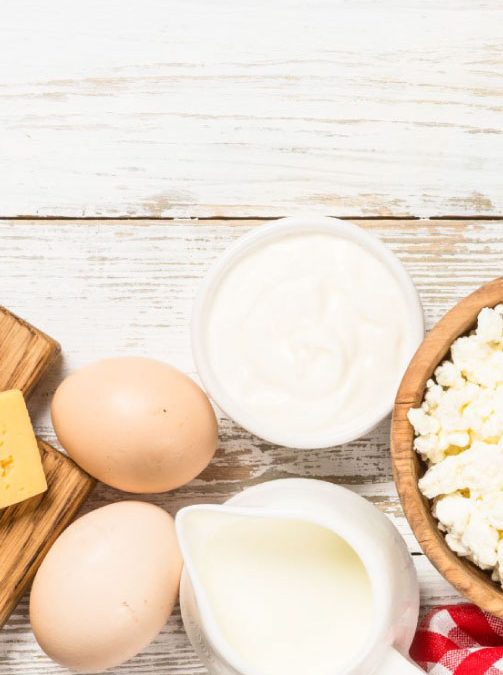
Dairy Knowledge
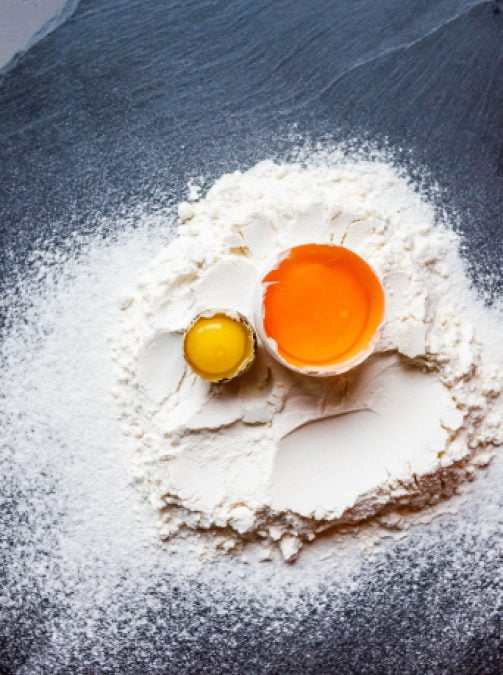
Knowledge – Eggs
KNOWLEDGE - EggsEggs are laid by female animals of many different species. Bird and reptile eggs consist of an eggshell, (egg white), (egg yolk), contained within various membranes. Chickens and other egg-laying creatures are kept widely throughout the world and mass...
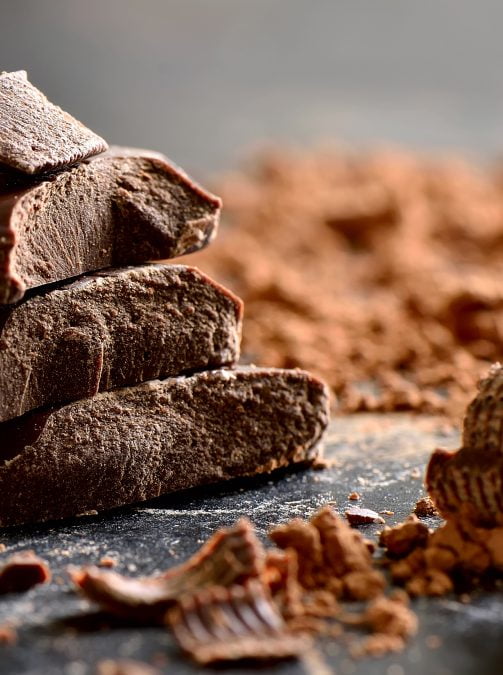
Knowledge – Chocolate
KNOWLEDGE - ChocolateThe Discovery and History of CocoaThe cocoa plant originates in South America, specifically in Venezuela, Ecuador and Mexico as well as the Caribbean. Cocoa trees form part of the lower canopy, protected by the upper canopy and giving the trees...
